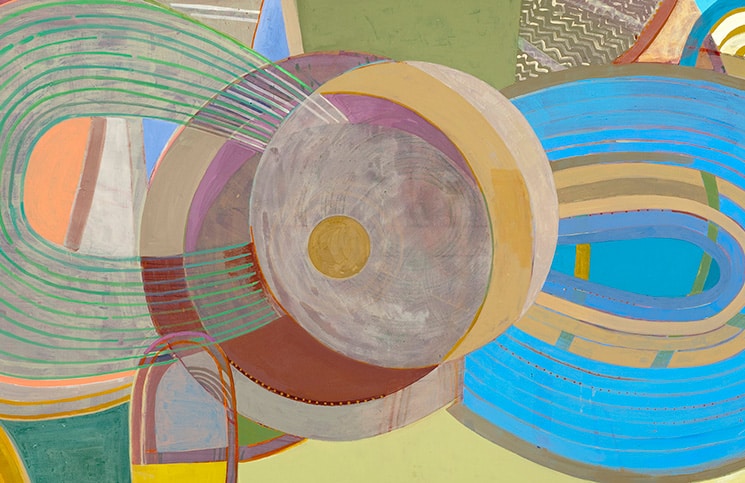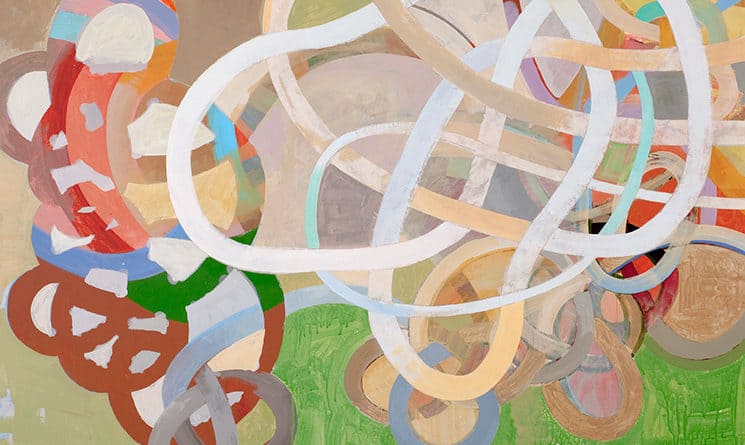As a child, Shiao-Ping Wang learned to write hundreds of complicated Chinese characters, each one representing a word, rather than a sound.
A native of Taiwan, she’s now lived about half of her life stateside, but she still searches for an older, deeper meaning behind any symbol or pattern.
“It’s a way we make connections,” she says. “Patterns are a basic impulse to communicate.”
An exhibition of Wang’s recent paintings is on view at Rochester Public Library’s Carnegie Gallery, curated by the Rochester Museum of Fine Arts, through Nov. 28. The artist is also participating in the bi-annual open studios event at the Salmon Falls Mills in Rollinsford, where she works, the weekend of Nov. 21 and 22.
Wang is drawn to maps, graphs, and charts, but is most interested in weaving patterns. She says the weaving symbolizes transition and hope for connection. Beneath that, there’s a concern about becoming “lost” in an in-between state, perhaps the result of a life within and between two cultures.
With layers of paint, she transforms a solid line with turns and twists, the way a single strand can be tied into a knot with a different appearance and purpose. She says knots can be useful, even essential, beautiful, and symbolic, just like characters in a language.
Wang’s paintings usually begin with the visualization of a concrete idea or image, such as sound waves or a city map, but she gives her subject an abstract form that captures the energy and essence of it. In this way, her paintings say more with less, the way one Chinese character can relate a concept spelled with many English letters.
She believes many of the simple marks used as ornamentation on primitive artwork, like zigzags or circles, once held long lost, universal meanings. Painting is a way for her to rediscover those deeply held meanings of shapes that have become generic, but also how she makes new meaning. She often combines, overlaps, or intertwines traditional or preexisting patterns and those of her own invention.
 “Drumming” demonstrates Wang’s fascination with knots and patterns.
“Drumming” demonstrates Wang’s fascination with knots and patterns.
In the painting titled “Our Town,” her home of Somersworth is represented with a map, while a weaving pattern symbolizes its history of textile production, as well as a hope that its citizens would come together to make something better. At the time, the town was considering an arts and cultural center, which is indicated by an orange dot on the painting.
Her ongoing fascination with pattern is advanced by the challenge to create paintings that are economical in design but powerful in expression, and that exude her presence. Some of her more recent paintings contain a knotting pattern but also bold, solid color fields. She wants to speak more directly to the viewer in her own visual language.
An unexpected result is that the paintings have started speaking to her, in a way, as well. In “Dialogue,” for example, Wang imagines a narrative for the figures that emerge in the loops. They interact with each other and the shapes around them, sometimes reaching out, and other times confronting each other.
Wang says she has a natural tendency to look for the origin and meaning behind forms and words. Her paintings let us see the same way, and nothing gets lost in translation.
Rochester Public Library is located at 65 South Main St. in Rochester. The Salmon Falls Mills are at 1 Front St. in Rollinsford.

